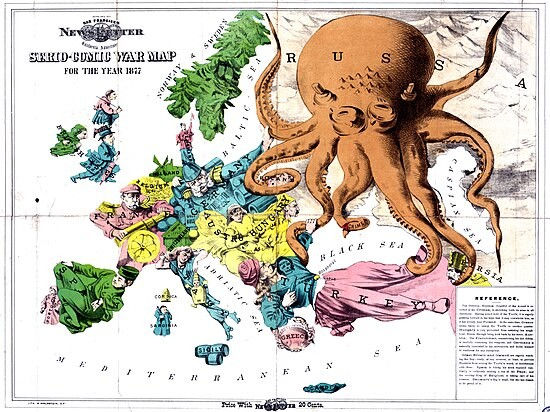The Great Green Wall, key to curbing climate barbarism
- Pablo Díaz Gayoso

- May 22
- 4 min read
Climate change is now inevitable, and this sort of manifest destiny has become a self-fulfilling prophecy. When we speak of “climate change”, we are not referring to the great climatic transformations that have always occurred on the planet over its millions of years of existence. Glaciations and other similar phenomena, which are estimated to have taken place hundreds of millions of years ago, cannot be attributed to human action for the simple reason that mankind did not exist at that time. However, the fact that there have been extreme climatic periods not caused by humans does not imply that the one we are currently experiencing follows the same pattern. It has been repeatedly demonstrated that human activity has a considerable effect on the warming of the atmosphere, ocean and land. This effect causes the global climate system to become increasingly unstable and unpredictable, and consequently more aggressive. Of all the consequences of climate change, we are going to analyze one of the most aggressive ones that is affecting the African continent to a greater extent: desertification.

In Africa, the effects of climate change are devastating. Countries are losing between 2% and 5% of their GDP directly due to this phenomenon, in addition to the need to allocate around 9% of GDP to mitigate its impacts. The threat to populations is twofold. On the one hand, the thawing of the poles is causing a rise in sea level, which endangers hundreds of coastal economies centered on fishing. This situation affects both habitability and food supply. On the other hand, the second threat facing many countries is the effects of extreme weather events. Both droughts and torrential rains are increasingly common and no less destructive. Water scarcity is a reality that considerably reduces the productive capacity of agriculture and livestock farming. Likewise, if we focus on sub-Saharan Africa, we are faced with the constant threat posed by an expanding desert.
To curb the expansion of the Sahara, the countries of the southern fringe of the desert - Senegal, Mauritania, Mali, Burkina Faso, Niger, Nigeria, Chad, Sudan, Ethiopia, Eritrea and Djibouti - have agreed on a joint response to this existential climate threat. The initiative, known as the Great Green Wall, consists of a massive reforestation effort, the most ambitious in history. The aim is to create a continuous strip of vegetation running west to east across Africa, 15 kilometers wide and more than 7,000 km long.

The viability of the project depends on the reforestation being concentrated in areas with sufficient annual rainfall. To compensate for the water deficit, it is planned to build hydraulic retention basins. In addition to combating climate change, it is expected to reverse the loss of productivity associated with desertification.
The massive planting of vegetation has succeeded in revitalizing the local economy, generating jobs in the primary sector. This project acts as an investment multiplier: the green wall will fix, enrich and regenerate soils. The trees will retain environmental humidity, provide shade, reduce maximum temperatures and, consequently, diversify damaged ecosystems. Furthermore, the ecological development of the area could improve the coexistence between livestock-grazing and farming communities, whose relations tend to become more conflictive in contexts of scarcity.

Driven by the Sahel countries through the Great Green Wall platform, the project receives funding from the States concerned, as well as from a dozen international organizations, including the World Bank, the United Nations, the European Union and the African Union, at an estimated cost of 8 billion euros.
However, progress has stalled. Initially, the target date was 2030, but deteriorating security in the Sahel has stalled much of the action. Governments have redirected their budgets towards fighting jihadist insurgencies, compounded by a lack of leadership and funding. This scenario points to a bleak future for the Great Green Wall.
However, there is reason for optimism as this project is not the first in the world, or even on the continent, and lessons can be learned from experience. In the 1970s, the Algerian government promoted the Barrage vert project, which consisted of building its own Green Wall on the northern shore of the Sahara. The project achieved good results during the first years but also encountered major setbacks. The degradation of the project was attributed to forest clearance, overgrazing by livestock and the proliferation of the processionary pine caterpillar. As a result, the Algerian government has promoted green revitalization policies over the past decade.

India and China have also implemented massive planting of green corridors, but with an eye mainly on another front. In order to reduce the extremely high levels of environmental pollution, India is planning to build its own Great Green Wall. The Aravali Great Green Wall would connect the western state of Gujarat with the capital New Delhi (1,400 km long and 5 km wide).
The Chinese project aims to curb the expansion of the Gobi desert. Begun in 1978, it is scheduled to be completed by 2050. The urgency of this initiative lies in the fact that 27.4% of the Asian giant's territory is already desert, and this figure continues to rise.

However, the project has faced serious challenges: while extensive areas are being reforested, the advance of climate change and extreme events, such as sandstorms and recurrent droughts, have eroded progress. In addition, structural problems, such as lack of maintenance and unregulated human activity, have reduced their effectiveness.
These projects are a sound approach to mitigating the effects of climate change, especially in degraded and environmentally threatened environments. However, like any public policy, they require adequate maintenance to ensure their long-term effectiveness. Political and financial will, the fight against plant pests and human activities such as illegal logging are the main obstacles to their sustainability.










Comments